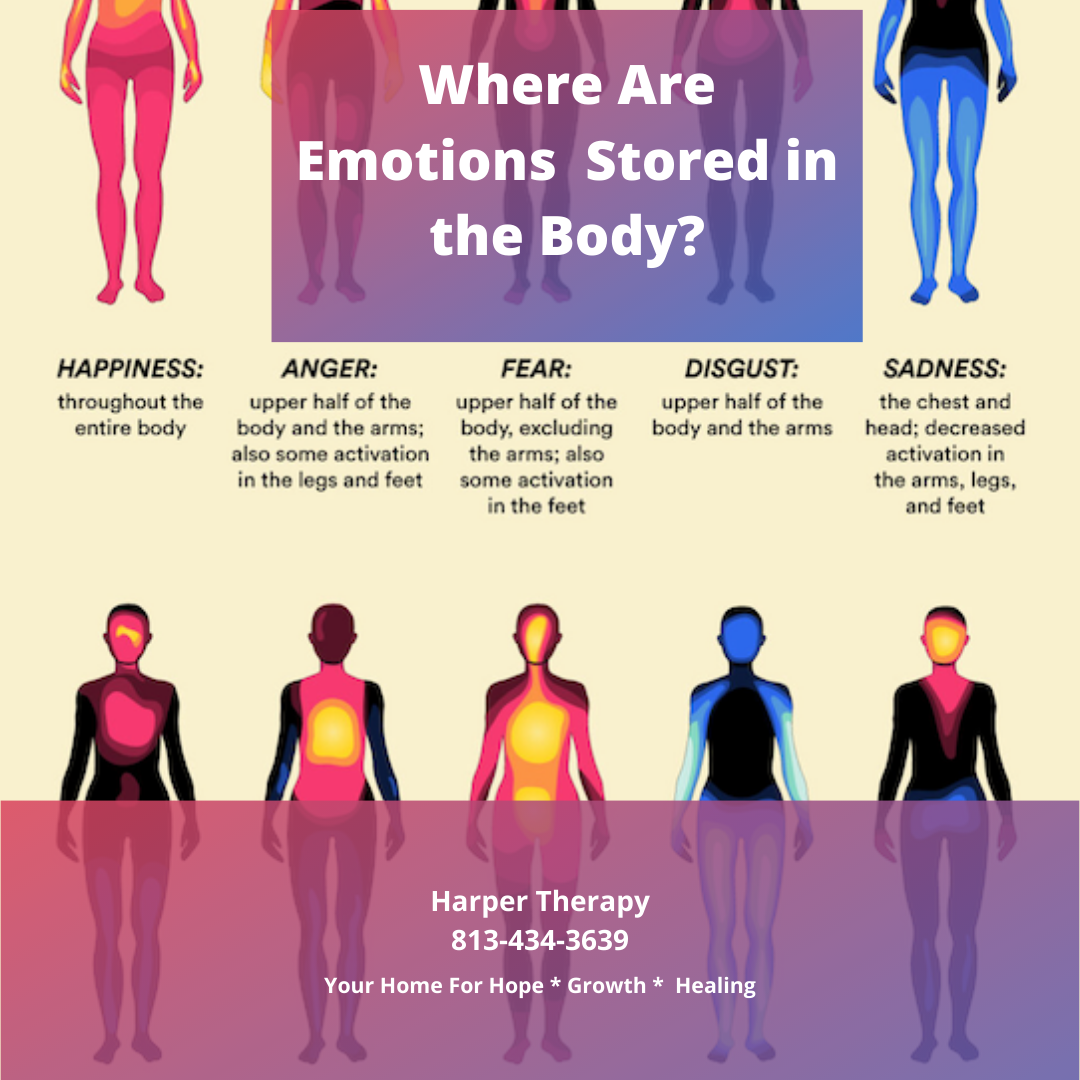Emotions and the Body
This week, we talked about where emotions are stored in the body. Recent research using thermal body mapping has shown that emotions can either activate or deactivate certain parts of the body. For instance, love may activate the full body while depression may deactivate the exact same area. Most of us are aware when emotions have a physical effect on our bodies. Some people with anxiety may feel a tightening in the chest, stomach or throat, while others who feel anger tend to experience heat in their head, chest and arms.
At Harper Therapy, we often ask our clients where they experience sensations in their body during a session, as this can be a clue to what emotions they may be holding onto. As practitioners of Accelerated Resolution Therapy, we use bilateral eye movements to help clients calm body sensations so that they are better able to process disturbing memories and events. Many people experience discomfort when they feel negative emotions however, as mentioned, emotions can give us clues to what is going on underneath the surface. For instance, you might be upset/angry about something that happened at work, but when you take a moment to feel the underlying emotions, you might recognize that the feeling really stems from relationship issues at home or something that happened in the past.
Some questions you might ask yourself when you are feeling disturbed or are unsure of what emotions you are experiencing are:
Where in your body are you feeling the disturbance or emotion?
What does the disturbance or emotion feel like? (e.g. tightening, heavy, light, flowing)
When did you start experiencing this feeling in the body? What was going on at the time?
What is your mind telling you about this feeling? Are you judging it or are you able to observe it without trying to fix or change it?
Who can you talk to about this feeling?
You might take a few minutes to breathe prior to answering these questions in order to gain more awareness about what is going on within. You might also consider journaling the answers to these questions for even more clarity. Either way, taking time to understand your feelings and where they stem from will give you increased insight into yourself and your behaviors.

